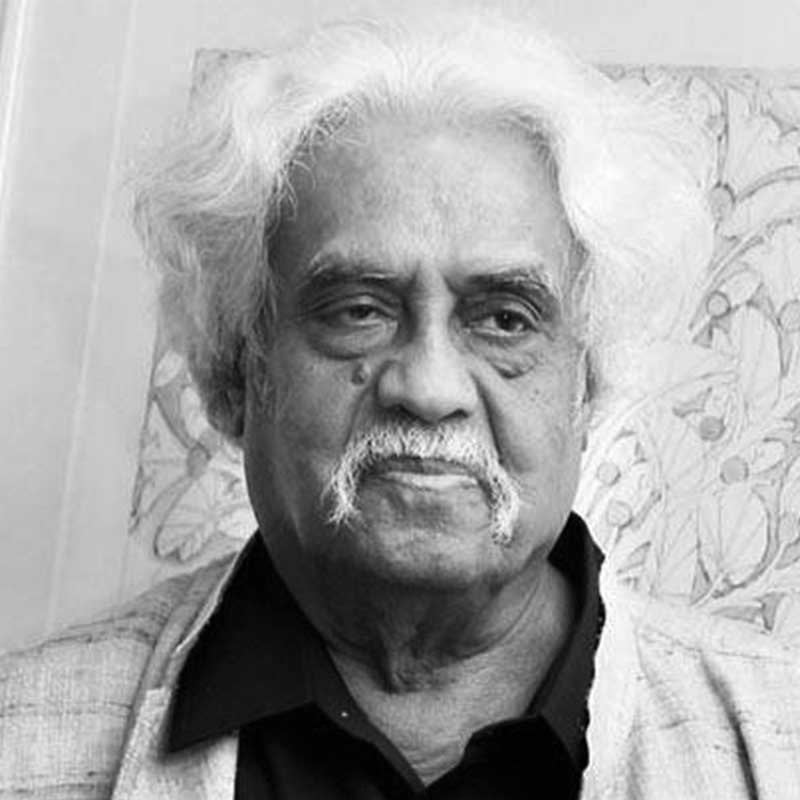
Achutan Ramachandran (1935-2024) was born in Attingal, Southern Kerala. He obtained his MA in Malayalam Literature in 1957, however his interest in art prevailed, and he went on to join Kala Bhavan, Santiniketan. There, he trained under masters such as Ramkinkar Baij and Benode Behari Mukherjee and completed his art education in 1961. Between 1961 and 1964, Ramachandran pursued his doctoral thesis on Kerala mural painting. He moved to Delhi in 1965 and was a lecturer and eventually the head of the art department at Jamia Millia Islamia University until 1992.
Ramachandran’s initial painting style was expressionism, aimed at reflecting the angst of urban life. They were large and realistically figurative. However, by the 1980s his preoccupation moved away from urban tensions and was influenced by a tribal community in Rajasthan. He also began to draw inspiration from the temple murals in Kerala temple. The first piece Ramachandran produced in this new style was ‘Yayati,’ a retelling of the story from the Mahabharata. In addition to his work as a painter, Ramachandran also produced sculptures. In 2003, he designed the granite bas-relief sculpture at the Rajiv Gandhi Memorial at Sriperumbudur, near Chennai, Tamil Nadu. In the same year the National Gallery of Modern Art, Delhi organised a retrospective of his work.
Ramachandran has also published articles and is the author of a study on Kerala temple murals, titled ‘Abode of Gods: Mural Traditions of Kerala’. His illustrated children’s books have been published internationally and were the recipients of the Noma Concours Awards in 1978 and 1980.
In 2005, he was awarded the Padma Bhushan and in 2002, he was elected a Fellow of the Lalit Kala Akademi. Ramachandran lived in New Delhi until his passing in 2024.